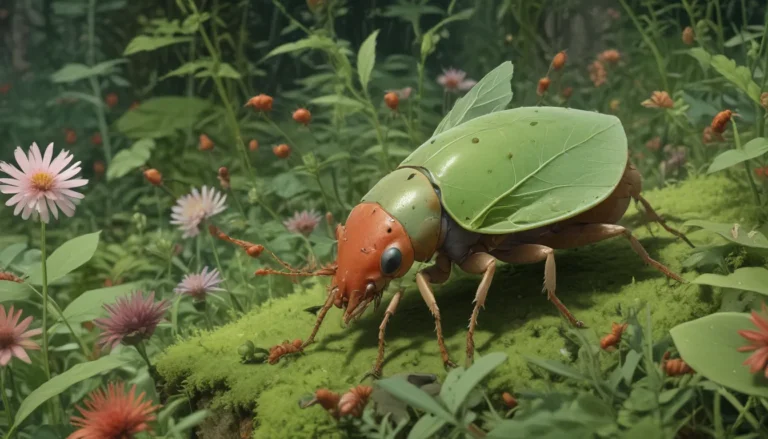How to Successfully Manage an Argentine Ant Infestation

Argentine ants, scientifically known as Linepithema humile, are notorious for being one of the world’s most invasive and problematic ant species. With unique characteristics and biology that contribute to their success as invaders, these pests can wreak havoc on households, gardens, and local ecosystems. In this comprehensive guide, we will explore the identification of Argentine ants, their behaviors, distribution, colonization in the United States, threats to crops and animals, infestation sites, and effective control methods.
Characteristics and Biology of Argentine Ants
Identifying these pesky insects is essential in effectively managing an infestation. Argentine ants are typically light to dark brown in color and measure around 2.2 to 2.8 millimeters long. Unlike many ant species, Argentine ants lack a stinger but have five to eight large teeth on their mandibles. They are known for their distinct antennae with 12 segments, with the first segment as long as their head.
One unique feature of Argentine ants is their ability to have multiple queens within a colony, a phenomenon called polygyny. This characteristic contributes to the rapid spread and establishment of interconnected nests. In addition, Argentine ants exhibit unicoloniality, meaning they are not aggressive towards other ants from different colonies but can be hostile towards other ant and insect species. Their colonies can grow to millions of insects spread over vast areas.
Most intriguingly, Argentine ant queens display unusual behaviors, such as producing as many as 60 eggs per day and nurturing the young alongside worker ants. They possess the mobility to establish new colonies via a process known as budding, allowing them to adapt swiftly to changing environmental conditions and colonize new territories.
Distribution and Colonization
Originally native to South America, Argentine ants have invaded all continents except Antarctica. In the United States, these pests were first identified in New Orleans in the 1890s, likely introduced through shipments of goods. They have since spread across the southeastern US and into California, thriving in warmer climates. However, their expansion is limited by freezing temperatures and their need for moisture.
Argentine ants are highly invasive pests that displace native ant species and pose serious threats to local ecosystems. In California, they have negatively impacted populations of animals like coast horned lizards and shrews, affecting the food chain and ecosystem balance.
Threats to Crops and Animals
The presence of Argentine ants can lead to significant agricultural and environmental damages. These pests feed on plants, including buds and fruits from trees such as citrus, jeopardizing crop yields. They have been observed preying on bees and consuming honey and eggs of birds, reptiles, and amphibians. In regions like South Africa, Argentine ants have disrupted local ecosystems by outcompeting native species and altering food sources.
Infestation Sites and Behavior
Argentine ants prefer nesting in moist environments, making households, gardens, and urban areas prime habitats for colonization. They can be found nesting under rocks, logs, and mulch, as well as along sidewalks and building foundations. These pests are highly adaptable and can exploit various entry points into homes, including plumbing lines and tree branches.
Strategies for Controlling an Infestation
Managing an Argentine ant infestation requires a comprehensive approach that addresses their unique behaviors and biology. Here are some effective strategies to control these invasive pests:
-
Reduce Habitat and Limit Water Access: Remove sources of moisture and debris around your property to discourage ant nesting.
-
Keep Pests Off Your Plants: Control aphids and other insect pests that attract Argentine ants by treating your plants with appropriate measures.
-
Fortify Your Home: Seal entry points and trim vegetation to prevent ants from accessing your house.
-
Practice Sanitation: Maintain cleanliness in your home by eliminating food sources and crumbs that attract Argentine ants.
-
Ant Bait: Use boric acid or fipronil-based bait stations to target Argentine ant colonies. These baits are slow-acting and can be effective in eradicating the pests.
For optimal results, consider placing bait stations both indoors and outdoors to target colonies effectively. Professional extermination services may be necessary for widespread infestations, as they have access to stronger chemicals and specialized treatment methods.
Conclusion: Act Swiftly to Combat an Infestation
In conclusion, Argentine ants pose significant challenges for homeowners and gardeners due to their invasive nature and large colonies. By understanding their behaviors, distribution, and threats, you can develop effective strategies to control and eliminate infestations. It is crucial to act promptly at the first signs of an infestation to prevent further spread and protect your property and local environment.
Have you encountered an Argentine ant infestation before? Share your experiences and tips in the comments below. For more information on managing ant infestations, check out our additional guides on controlling pavement ants, citronella ants, and odorous house ants. Stay informed and proactive in combating invasive pest species in your area!
Remember, proactive measures are essential in maintaining a pest-free home and garden. Implementing prevention strategies and seeking professional help when needed can help you effectively manage Argentine ant infestations and protect your property. Stay vigilant and take action to combat these invasive pests!





